Pouring concrete is an important step for several different types of home improvement projects. In fact, there are even multiple kinds of cement that you might want to use depending on the scope of your particular project. You need to know just how long you need to wait before you can move on to the next stage of your project. How long does it take for cement to dry?
You might be surprised to learn that there is no simple answer to this easy question. Much of the information surrounding dry times depends on what type of cement you are using. If you want to learn more about what to expect from different types of cement, here is a short guide to all of the most common types and how long it will take them to dry.
How Long Does It Take for Cement to Dry?
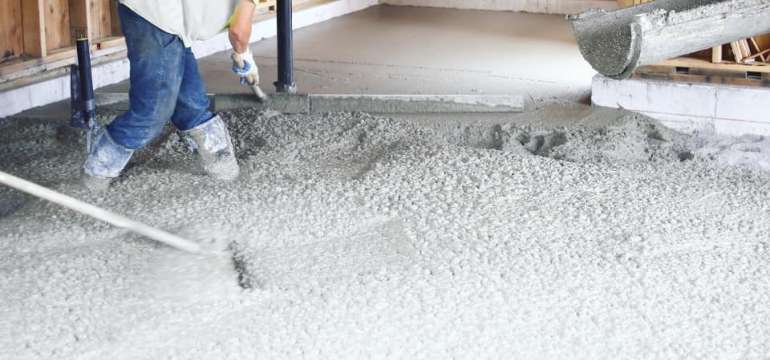
Construction work is always moving at a rapid pace, so it is important to know when you can begin to work with cement again after it has been poured. Many people make the mistake of confusing dry times with cure times. These are two vastly different things, and it is imperative that you understand the difference if you want to know how long before the cement dries.
Most construction sites are using Portland cement as one of the most basic elements of their concrete. At its most basic, concrete is a mixture of water and Portland cement that binds together with sand and rock until it forms a hard surface. Portland cement is mostly a mixture of raw materials, including limestone, clay, slate, silica sand, and others. The rock is crushed into a fine powder that can actually make its way through a sieve.
This powder is placed into a cement kiln at an elevated level and slowly lowered down an incline toward a flame. Some elements evaporate in the gas form until it creates clinker, grey balls that are roughly the size of a marble. It is cooled, ground down, and mixed with gypsum and limestone to create ready-mix cement perfect for your building project.
Portland cement and concrete typically dries within the first 24 hours that you pour it. This means that it is hard enough for you to walk on and continue other trades on top of it. It allows you to continue working on the project while the concrete cures and continues to harden. However, it has not reached its full hardness during this extremely short period of time.
Concrete will continue to harden throughout its lifespan, but the difference is relatively negligible. People will really only notice the difference in the first month. After that, the progress is slow-going and does not make much of a difference.
At the seven-day mark, the concrete is roughly two-thirds of the hardness that it will become. This is an okay time for you to begin bringing light machinery and objects onto the surface of the cement without causing unnecessary damage. Many people would prefer to be safe rather than sorry, choosing to wait for the full length of time that cement takes to cure.
If you are one of these people, you should know that cement takes roughly 28 days before it reaches its full hardness. At this point, you should be safe to bring heavy machinery and other objects onto the concrete without fear of gouging it, causing grooves, or otherwise damaging the smooth surface that you poured.
How Long Does It Take Quikcrete to Dry?
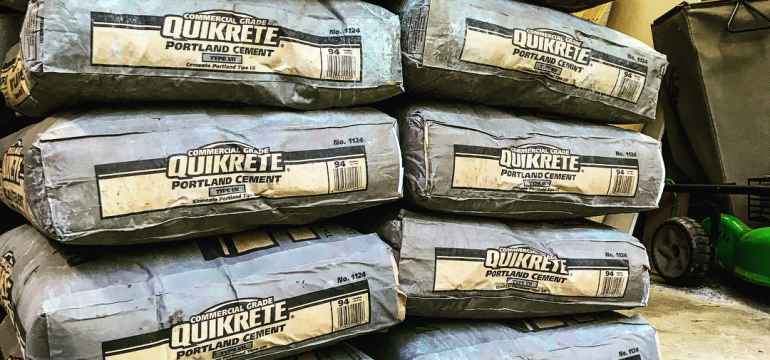
Many homeowners and builders are eager to move on with the next stage of their project. They are drawn to the allure of a fast-drying cement because it means that they can forge ahead much sooner than with traditional Portland cement. Quikcrete promises to fill a major hole in the market and offers extremely short dry times and cure times so that you can move forward faster.
Quikcrete Fast-Setting Concrete sets in just twenty to forty minutes. Keep in mind that this is under ideal conditions when the weather is warm and not too wet. Lower temperatures and higher humidity levels can affect dry times and prolong the amount of time it takes cement to dry.
The company recommends that you wait longer to hang heavy objects if the temperature dips below 72 degrees Fahrenheit.
Most people use Quikcrete to insert posts in the ground or to hang other structures from these posts. Heavy objects can be hung from the post later that afternoon if you have favorable conditions for drying and curing. Those heavy objects such as basketball backboards can often be hung in as little as four hours.
How Long Does It Take PVC Cement to Dry?
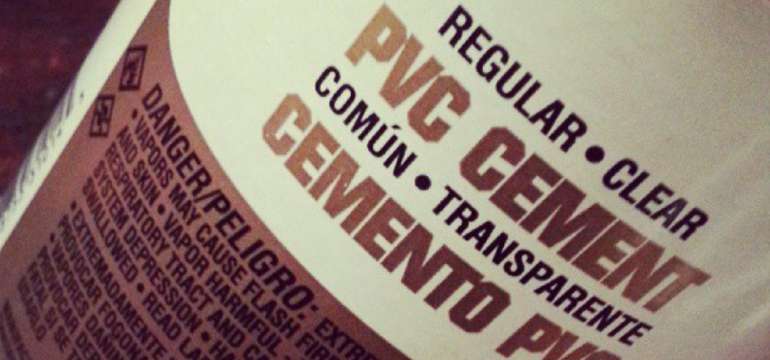
PVC cement is a much different scenario than the cement traditionally used in construction work. This type of cement is actually a bonding agent that helps one pipe fasten to another. It is unlike many types of glue because it does not bond through curing and hardening. Instead, the solvents dissolve the plastic. All you have to do to join two pipes together is soften the plastic through the application of the PVC cement and push them together to create one fused piece.
You will have a very short window for working time once you apply PVC cement, so make sure that you are completely ready to move forward. You will have just a fifteen to twenty-second window to work with the pipes before it begins to dry. During certain types of weather, such as extremely humid temperatures, you may have slightly longer.
After the initial twenty seconds, you must hold the two pipes together for thirty seconds to keep them from coming apart. Make sure to check with the manufacturer’s recommendations to ensure that you are following the right guidelines to secure the pipes properly.
If you want the pipes to withstand water pressure, you must wait fifteen minutes. The full cure time when using PVC cement is two hours. You may want to wait longer if the temperature is low or the humidity is high, as this can affect the dry times of PVC cement.
How Long Does It Take CPVC Cement to Dry?
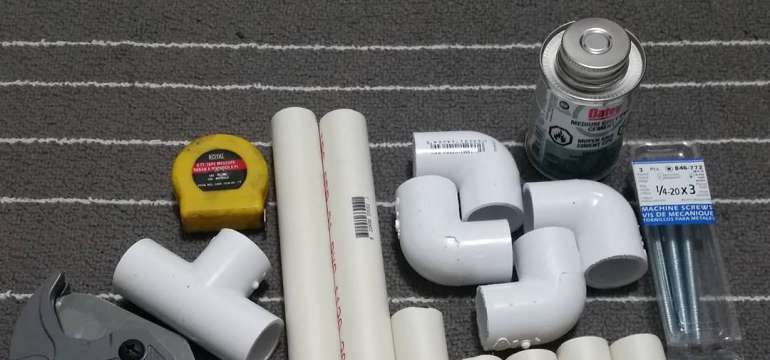
CPVC cement is similar to PVC cement in that it is not actually a form of cement. Much like PVC cement, this is a solvent that helps to tie two joints together to create one seam. Solvents in the CPVC break down the outer layer of pipes and fittings so that they can chemically combine and become one with another part. If there are any gaps in the weld, resins inside the CPVC fill in the spaces.
Again, this type of solvent can have an extremely short dry time. It does vary based on what type of pipe you happen to be fitting together, though. For example, a small pipe such as a ¾” can cure in as little as fifteen minutes while a 2 ½” pipe requires eight full hours.
Keep in mind that temperature and humidity play a large role in how long it takes for this type of “cement” to dry. It most effectively dries at temperatures ranging from 60- to 120-degrees Fahrenheit.
At a lower temperature or a higher humidity level, it can take up to twice as long to fully cure, if it ever does. Some manufacturers say that their products cannot ever form a bond if the temperature is too low or the humidity is too high. Be aware of the atmosphere, and choose a good day if you plan to use CPVC cement.
How Long Does It Take for Rubber Cement to Dry?
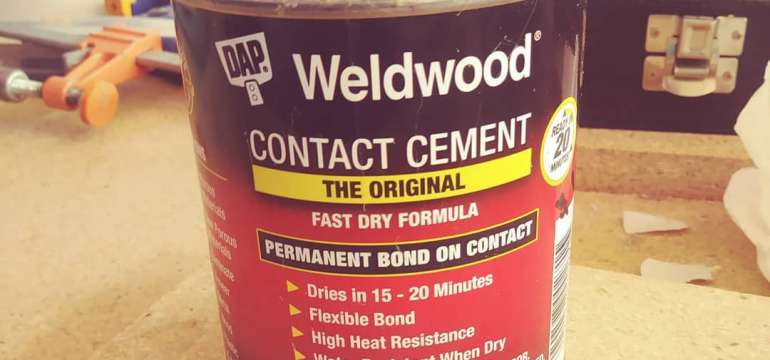
Rubber cement is another compound that is typically used to patch tires or inner tubes, but it can also be used for other applications. Some people use it on rubber roofing or to join two seams together more smoothly. Depending on how you use the rubber cement, your dry times and cure times can definitely vary.
When you are using it for the usual application on your tires or inner tubes, expect it to dry extremely quickly. In higher temperatures and dry air, rubber cement can dry in as little as one minute. The full cure time takes a little bit longer, so you should plan on waiting about fifteen minutes before rechecking the tire or tube for additional leaks.
Rubber types of cement for roofing or joining seams together tend to have longer dry times.
Keep in mind that the temperature and humidity levels do play a role in how long it takes your rubber cement to dry. Lower temperatures and high humidity levels or wet weather will prolong the drying time. This should be kept in mind before rechecking any leaks.
Allowing Your Cement to Dry
Unfortunately, there is no simple answer when it comes to how long it takes your cement to dry. It will depend on what type of cement you are using, the ambient conditions of the environment, and more. Consider the temperature and humidity levels and allow for extra drying on all types of cement if they are less than ideal.
Whatever type of cement you choose to use, make sure that you give it enough time to cure properly. You could undo all of your hard work by trying to force the concrete to hold something or withstand the pressure that it simply is not ready for yet.
While pouring concrete can definitely be a home project you can tackle, make sure not to rush it! If you are hesitant about whether your concrete has cured enough to move forward, make sure to consult your manufacturer for more details.
- How to Cut Lexan - September 25, 2020
- Mineral Spirits vs. Mineral Oil - September 25, 2020
- Shellac vs. Polyurethane - September 24, 2020
